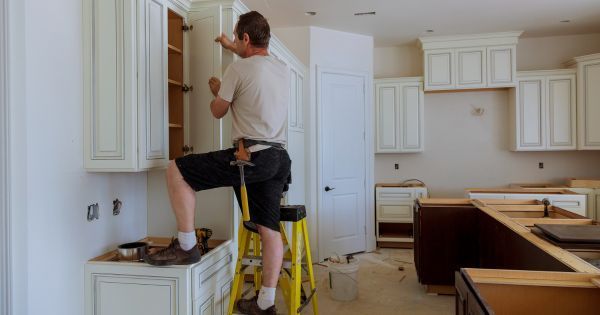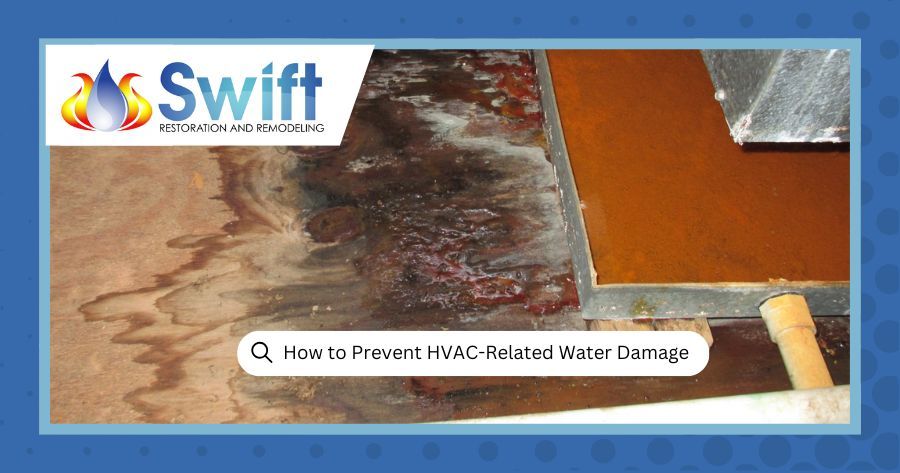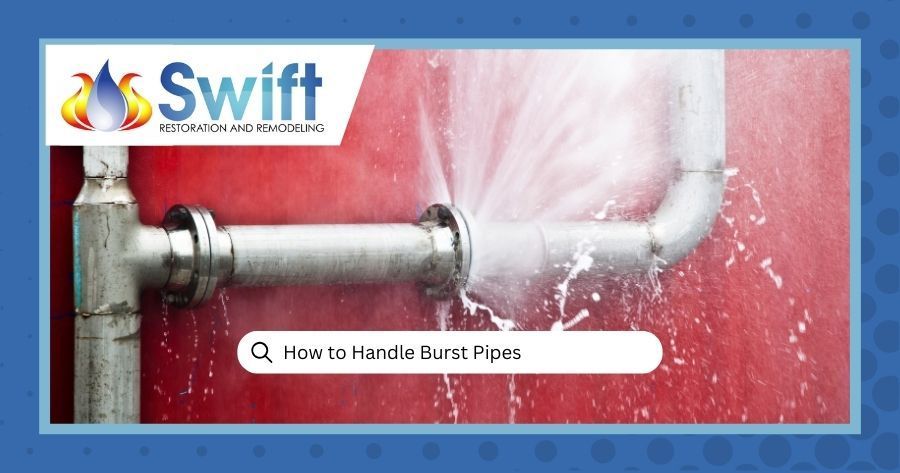
Water damage to kitchen cabinets can be a real headache for homeowners, especially in areas prone to moisture. Tackling this issue on time is important to prevent further damage and keep your kitchen in good shape. In this guide, we'll walk you through the steps of repairing kitchen cabinets, both DIY and professional solutions. This will help you make some informed decisions. Plus, if you need a company handling water damage Salt Lake City UT, keep reading!
DIY Repair
Repairing water-damaged cabinets yourself can be a cost-effective solution if the damage is relatively minor.
Steps:
If you are a DIY enthusiast wondering how to repair kitchen cabinets with water damage, here's how you can do it:
- Identify the Signs of Damage:
Begin by carefully inspecting the water-damaged cabinets for signs of warping, swelling, discoloration, and mold growth. Identify the extent of the damage to determine the necessary repairs.
- Remove Damaged Components:
Safely remove any water-damaged cabinet doors, drawers, and shelves to check the underlying damage. Use a screwdriver to remove screws and a hammer and pry bar for stubborn components.
- Dry Out the Cabinets:
Dry out the cabinet interiors and surrounding areas using towels, cloths, and fans. Ensure proper ventilation speed up the drying process and prevent mold growth.
- Sand the Surfaces:
Once the cabinets are completely dry, use sandpaper to smooth out any rough or raised areas caused by water damage. Sand in the direction of the wood grain to achieve a uniform finish.
- Apply Wood Filler (if Needed):
For deeper gouges or holes in the wood, use wood filler to fill in the damaged areas. Follow the manufacturer's instructions for application and drying times, then sand the surface once the filler is dry.
- Refinish or Paint:
Depending on the outcome you want to achieve and the condition of the cabinets, you can refinish or repaint them. Apply a fresh coat of paint or stain to restore the cabinets' appearance and protect them from future water damage.
- Reassemble the Cabinets:
Once the paint or stain is dry, reassemble the cabinets by reinstalling the doors, drawers, and shelves. Use new screws if necessary and ensure everything is aligned properly.
Professional Repair
While DIY repairs can be suitable for minor water damage, extensive damage or mold infestations may require the expertise of a professional damage restoration contractor.
Steps:
Here's a step-by-step overview of how professionals typically approach repairing water-damaged cabinets:
- Initial Assessment: A professional technician will thoroughly
assess the water damage to your kitchen cabinets. This includes inspecting the extent of the damage, identifying any underlying issues, and determining the best course of action for repair.
- Water Extraction and Drying: The first step in professional water damage repair is often water extraction and drying. Using specialized equipment such as industrial-grade wet vacuums and dehumidifiers, technicians will extract excess water from the cabinets and surrounding areas. Then, they'll set up drying equipment to dry out the affected cabinets and prevent mold growth.
- Disinfection and Sanitization: To create a clean and hygienic environment, professionals will disinfect and sanitize the water-damaged cabinets. This helps eliminate any bacteria, mold spores, or other harmful substances that may be present. This step reduces the risk of health issues and future mold growth.
- Structural Repair and Restoration: Depending on the severity of the damage, structural repairs may be needed to restore the cabinets to their pre-damaged condition. This may involve replacing damaged wood, repairing or reinforcing cabinet frames, and tackling any structural issues that contributed to the water damage.
- Cabinet Refinishing or Replacement: Once the structural repairs are complete, professionals will refinish or replace the cabinet surfaces as needed. This may involve sanding, staining, painting, or applying protective coatings to restore the cabinets' appearance and protect them from future water damage.
- Mold Remediation: If mold growth is present, professionals will use mold remediation techniques to remove the mold from the cabinets and surrounding areas. This typically involves containment, air filtration, removal of affected materials, and thorough cleaning and disinfection to prevent recurrence.
Preventative Measures
To prevent future water damage to your kitchen cabinets, take proactive measures such as:
- Fixing Plumbing Leaks:
Regularly inspect plumbing for leaks and quickly replace worn-out seals or pipes to maintain a watertight system and prevent water damage.
- Maintaining Proper Ventilation: Use exhaust fans while cooking and open windows to promote air circulation, preventing moisture buildup and mold growth in cabinets.
- Monitoring Humidity Levels:
Keep indoor humidity levels between 30% and 50% using a hygrometer and consider using a dehumidifier to prevent excess moisture accumulation and cabinet damage.
- Inspecting and Maintaining Sealants:
Regularly check sealants for cracks or gaps around sinks, countertops, and backsplashes, and reapply as needed to maintain a watertight barrier against water seepage.
- Protecting Cabinet Surfaces:
Apply protective finishes like varnish or polyurethane to seal wood surfaces and shield cabinets from moisture and spills, which will extend their lifespan.
- Inspect and Maintain Appliances:
Regularly check appliances for leaks or malfunctions, repairing or replacing faulty components on time to prevent water from seeping into cabinets and causing damage.
- Water Damage Insurance: Invest in
water damage insurance to safeguard your home against unexpected incidents, providing financial protection after water-related emergencies.
How to Repair Kitchen Cabinets with Water Damage: Professional vs DIY Solution
When facing extensive water damage or mold infestations in your kitchen cabinets, opting for professional help is the best choice. A reputable restoration contractor can provide thorough assessment and tailored solutions to restore your cabinets effectively. While DIY restoration may seem cost-effective, it may not properly tackle complex issues, risking further damage in the long run. If you're dealing with fixing water issues in crawl spaces, fixing water-damaged wood, ceiling water damage repair, or emergency water damage cleanup steps, it's worth seeking professional help.
Contact Swift Restoration and Remodeling for Bringing Your Water-Damaged Cabinets Back to Life
Contact Swift Restoration and Remodeling for a detailed water-damaged cabinet restoration. We handle everything from minor damage to extensive mold issues. Don't let water damage affect your cabinets, reach out today for swift and reliable restoration services.




